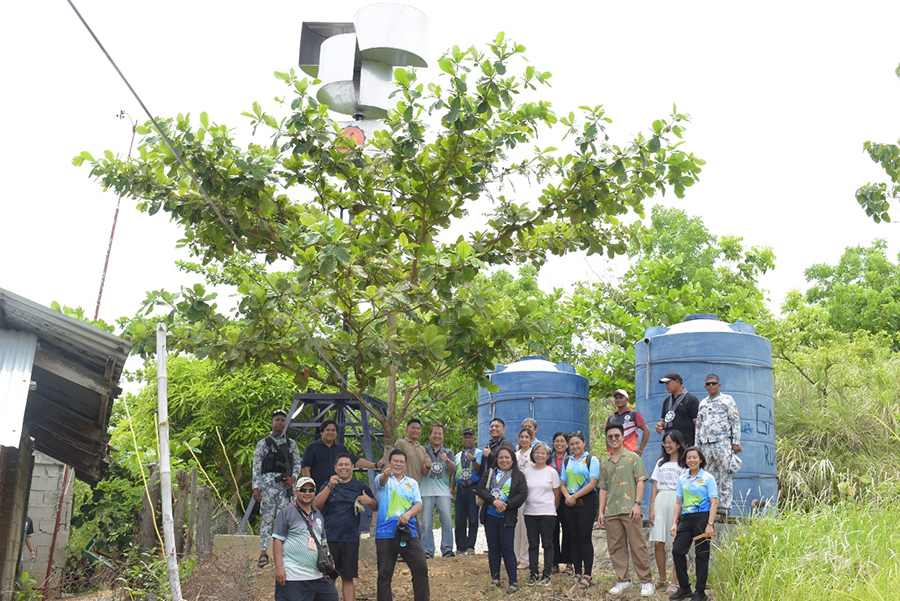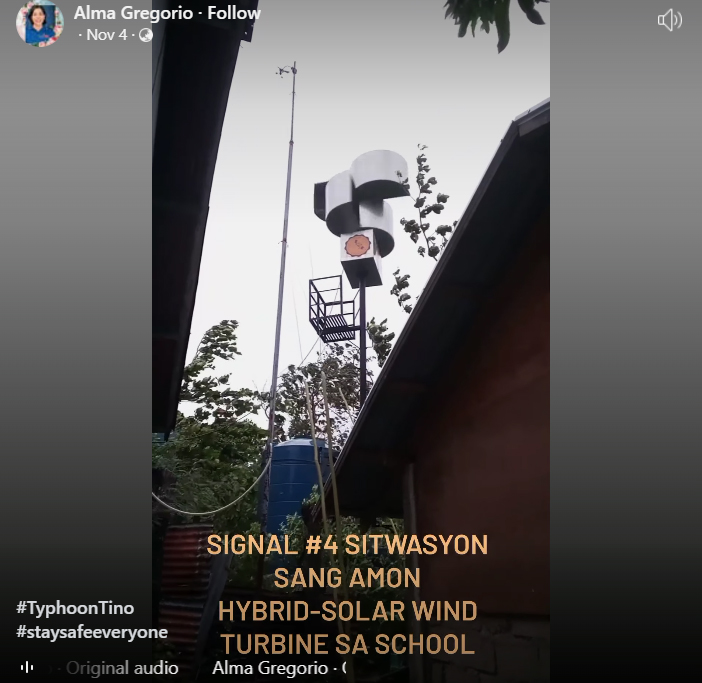By Mikee Natinga Norico

On May 28, 2025, partner institutions, LGU representatives, and CPU faculty and staff gather for the dedication of the Hybrid Wind-Solar Energy System at Danao-Danao Primary School, Sitio Danao-Danao, Brgy. Polopiña, Concepcion, Iloilo—an installation that later proved its resilience when it continued providing electricity to residents during Typhoon Tino.
As Typhoon Tino brought heavy rains and strong winds across Iloilo and nearby provinces, the residents and teachers of Sitio Danao-Danao, Barangay Polopiña, Concepcion, Iloilo, found light amid the storm. While classes were suspended, the community remained bright and connected—their lights stayed on, and essential devices continued to operate—thanks to the Hybrid Wind-Solar Energy System, a prototype research project developed by faculty and staff of the Central Philippine University (CPU) College of Engineering.
Installed at the Danao-Danao Primary School, the system stood resilient throughout the typhoon, providing uninterrupted electricity despite widespread power outages in surrounding areas. In a Facebook post on November 4, Ma’am Alma Gregorio shared that the hybrid solar-wind turbine remained strong even under Typhoon Tino Signal No. 4 conditions.
The installation on Danao-Danao island is part of a research project by selected CPU College of Engineering faculty and staff. It focuses on the design, installation, and evaluation of a small-scale vertical-axis wind turbine (VAWT) for electricity generation under the grant activity “Energy Knowledge Empowerment in Western Visayas (EKEWV),” funded by the USAID Energy Secure Philippines program.
Screenshot of Ma’am Alma Gregorio’s Facebook post highlighting the Hybrid Wind-Solar Energy System’s resilience during Typhoon Tino.
“It was not originally designed as a hybrid wind-solar system, but during implementation, wind resource monitoring revealed periods when the wind speed on site was insufficient for the turbine to generate electricity, posing the risk of draining the system’s battery storage,” explained Engr. Jeriel G. Militar, Faculty, Mechanical Engineering Department. “To ensure continuous power even during low wind periods, the team decided to integrate an additional power source—a solar PV panel to augment daytime power production.”
When asked about the system’s durability during Typhoon Tino, Engr. Militar emphasized that its success was not by chance but by meticulous engineering.
“The tower, turbine buckets, and other components of the wind-electric system were properly designed—using the right sizing and materials—to withstand strong typhoon winds,” he said. “The tower was also designed to be folded down, minimizing the exposure of the buckets (blades) to very strong winds, if necessary.”
Unlike conventional horizontal-axis turbines, the Savonius-type vertical-axis turbine used in this system has a self-limiting feature—it slows its rotation during very high wind speeds, preventing damage from over-spinning. This design proved crucial during the typhoon, allowing the system to endure the storm without structural damage or power loss.
Before the hybrid system was installed, Danao-Danao Primary School relied on a small solar panel that often failed to sustain battery power throughout the day. Teachers could use their laptops only for short periods, limiting their ability to prepare lessons or communicate online.
“Now, the school enjoys a 24-hour power supply,” shared Engr. Militar. “Teachers can fully utilize their laptops—not just for emails, but also as teaching tools. The school can even power electric fans and operate a public address system during programs and activities.”
The project directly benefits around 90 individuals, including students, teachers, and staff, making education more accessible and comfortable in this remote island setting.
While there are no immediate plans to replicate the system under the same USAID program, Engr. Militar noted that the success in Danao-Danao provides a strong case for expansion.
“The results of this research serve as a proof-of-concept for replication in other off-grid island communities in Northern Iloilo and nearby provinces,” he said. “Local government units, the Department of Energy (DOE), and the Department of Science and Technology (DOST) could potentially fund similar installations.”
The system was also designed with scalability in mind—additional battery storage units can be integrated to expand capacity and power more community facilities in the future.
The inauguration of the hybrid system on May 28, 2025, marked a significant milestone for the EKEWV project and its partner institutions. The event highlighted the power of collaboration between academia, government, and international partners in addressing the energy needs of marginalized communities.
As Typhoon Tino put the system to the test, the results spoke louder than any laboratory data: innovation, guided by compassion and resilience, can truly empower lives.
The Hybrid Wind-Solar Energy System of CPU College of Engineering stands as a beacon of sustainable energy innovation in Western Visayas—proof that even in the darkest storms, science and community spirit can keep the lights on.

